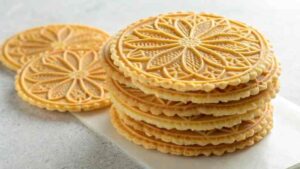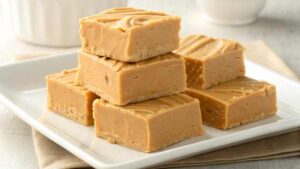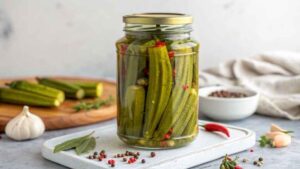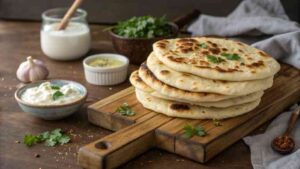Introduction
Ciabatta bread is an Italian classic, prized for its airy, open crumb, chewy texture, and crisp, flour-dusted crust. Perfect for sandwiches, dipping in olive oil and balsamic, or pairing with soups and stews, this artisan bread brings rustic charm to any meal. Its high-hydration dough requires some patience but rewards with authentic flavor. This recipe delivers a traditional ciabatta, adaptable for dietary preferences, best served fresh from the oven for home gatherings or casual dinners.
Ingredients
For the Biga (Starter):
- 1 cup bread flour (120g)
- 1/2 cup water, lukewarm (120ml)
- 1/4 tsp instant yeast
Dough Ingredients:
- 3 cups bread flour (360g), plus extra for dusting
- 1 1/4 cups water, lukewarm (300ml)
- 1 1/2 tsp kosher salt
- 1/2 tsp instant yeast
- All of the biga
For Finishing:
- Optional: Olive oil for brushing
- Suggested Tools: Bench scraper, parchment paper, baking stone or sheet
For Serving:
- Suggested Pairings: Olive oil with herbs, tomato soup, or prosciutto
- Suggested Beverage: Red wine (e.g., Chianti), sparkling water, or espresso
Step-by-Step Process
- Make Biga (12-18 Hours Ahead): In a small bowl, mix 1 cup bread flour, 1/2 cup lukewarm water, and 1/4 tsp instant yeast until a sticky paste forms. Cover tightly with plastic wrap and let sit at room temperature (70-75°F) for 12-18 hours, until bubbly and doubled in size.
- Mix Dough: In a large bowl, combine 3 cups bread flour, 1 1/4 cups lukewarm water, 1 1/2 tsp salt, 1/2 tsp instant yeast, and all of the biga. Stir with a wooden spoon or your hands until a shaggy, sticky dough forms, about 2 minutes. (The dough will be very wet; this is normal for ciabatta.)
- Knead Dough: Perform stretch-and-fold kneading in the bowl: Wet your hands, grab one side of the dough, stretch it upward, and fold it over the center. Rotate the bowl 90 degrees and repeat 3 more times. Cover and rest for 30 minutes. Repeat stretch-and-fold 3 more times every 30 minutes (total 2 hours).
- Bulk Fermentation: Cover the dough and let rise at room temperature for 8-12 hours, until tripled in size and very bubbly. (A warm spot speeds this up slightly.)
- Shape Loaves: Generously flour a work surface and your hands. Gently turn out the dough, keeping air bubbles intact. Divide into 2 equal pieces with a floured bench scraper. Shape each into a rough 10×4-inch rectangle by folding sides under slightly; avoid deflating. Place on a parchment-lined baking sheet or peel, dust with flour, and cover loosely with a clean towel. Let rise for 1-2 hours, until puffy.
- Preheat Oven: Place a baking stone (if using) or baking sheet in the oven and preheat to 450°F (230°C) for 45 minutes. Place a shallow pan on the lower rack for steaming.
- Bake: Just before baking, pour 1 cup hot water into the shallow pan to create steam (be cautious). Slide parchment with loaves onto the hot stone or sheet. Bake for 20-25 minutes, until golden brown and crusty, with an internal temperature of 200°F (93°C). Optional: Brush lightly with olive oil for shine after baking.
- Cool and Serve: Transfer loaves to a wire rack to cool for at least 30 minutes before slicing. Serve with olive oil, soup, or as sandwich bread, paired with a beverage like red wine or espresso.
Tips for Better Ciabatta Bread
- Use bread flour for a strong gluten structure; all-purpose flour yields a softer crumb.
- Handle dough with wet or floured hands to prevent sticking; a bench scraper is essential.
- Don’t skip the biga; it develops flavor and texture over 12-18 hours.
- Maintain dough hydration (about 80%); resist adding extra flour despite stickiness.
- Create steam in the oven for a crispy crust; a water bath or spritzing works.
- Let the dough rise fully to achieve ciabatta’s signature holes; under-proofing results in dense bread.
- Dust loaves with flour before baking for a rustic, artisan look.
- Cool completely before slicing to preserve the chewy interior.
Variations and Customization
- Whole Wheat Ciabatta: Replace 1 cup bread flour in the dough with whole wheat flour; add 1 tbsp extra water.
- Gluten-Free Ciabatta: Use a gluten-free bread flour blend and add 1 tsp xanthan gum; results may be denser.
- Herb Ciabatta: Add 1 tbsp chopped fresh rosemary or thyme to the dough during mixing.
- Olive Ciabatta: Fold in 1/2 cup chopped kalamata olives during the final shaping.
- Garlic Ciabatta: Mix 1 tsp garlic powder or 2 minced roasted garlic cloves into the dough.
- Seeded Ciabatta: Sprinkle sesame or poppy seeds on top before baking.
- Mini Ciabatta Rolls: Divide dough into 6-8 pieces for smaller rolls; reduce bake time to 15-18 minutes.
- Sourdough Ciabatta: Replace biga with 1 cup active sourdough starter; adjust flour and water slightly.
Storage and Serving Tips
- Store bread in a paper bag at room temperature for up to 2 days; plastic bags soften the crust.
- Freeze whole or sliced loaves in airtight bags for up to 2 months; thaw at room temperature.
- Refresh stale bread by sprinkling with water and baking at 350°F for 5-10 minutes.
- Serve warm or at room temperature; avoid refrigerating, as it dries out the crumb.
- Use leftovers for croutons, bruschetta, or panzanella salad.
- Slice thickly for sandwiches or thinly for dipping to suit the meal.
- Pair with a hearty soup or stew to soak up flavors.
- Keep the cut side down on a board to preserve the crust’s crispness.
Nutritional Information
Based on 12 servings (1 slice each):
- Calories: 140 kcal
- Total Fat: 0.5g
- Saturated Fat: 0g
- Trans Fat: 0g
- Cholesterol: 0mg
- Sodium: 290mg
- Total Carbohydrates: 29g
- Dietary Fiber: 1g
- Sugars: 0g
- Protein: 4g
- Vitamin A: 0% Daily Value
- Vitamin C: 0% Daily Value
- Calcium: 2% Daily Value
- Iron: 8% Daily Value
Note: Nutritional values vary based on ingredient brands and optional add-ins. This bread is low in fat but moderate in sodium. For dietary needs, try whole wheat or gluten-free variations. Its nutrients are minimal, primarily from flour.
Conclusion
This ciabatta bread recipe delivers a rustic, chewy loaf that’s perfect for any occasion, from casual dinners to artisan sandwich-making. Its straightforward process and authentic flavor make it a favorite for home bakers. The airy crumb and crisp crust create an irresistible bread. This recipe is sure to become a staple, cherished for its versatility and charm.
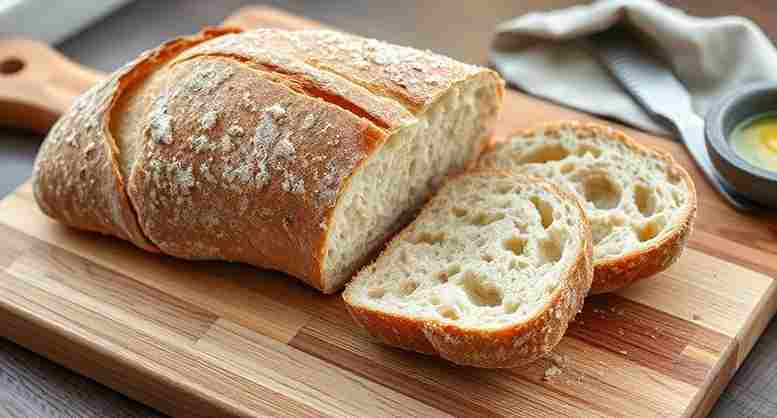
Ciabatta Bread Recipe: Rustic and Chewy
Ingredients
- Biga:
- 1 cup bread flour
- ½ cup water
- ¼ tsp yeast
- Dough:
- 3 cups bread flour
- 1 ¼ cups water
- 1 ½ tsp salt
- ½ tsp yeast
- All biga
- Optional: Olive oil
- Suggested Pairings: Olive oil red wine
Instructions
- Mix biga; rest 12-18 hours until bubbly.
- Combine dough ingredients; stretch-and-fold every 30 minutes for 2 hours.
- Let the dough rise 8-12 hours.
- Shape into 2 loaves; rise 1-2 hours.
- Preheat oven to 450°F with stone; bake with steam 20-25 min.
- Cool 30 min; serve with olive oil and wine.
Notes
- Use bread flour for the best texture.
- Store in a paper bag for up to 2 days, freeze for 2 months.
- Try an olive variation.
- Pair with soup.

